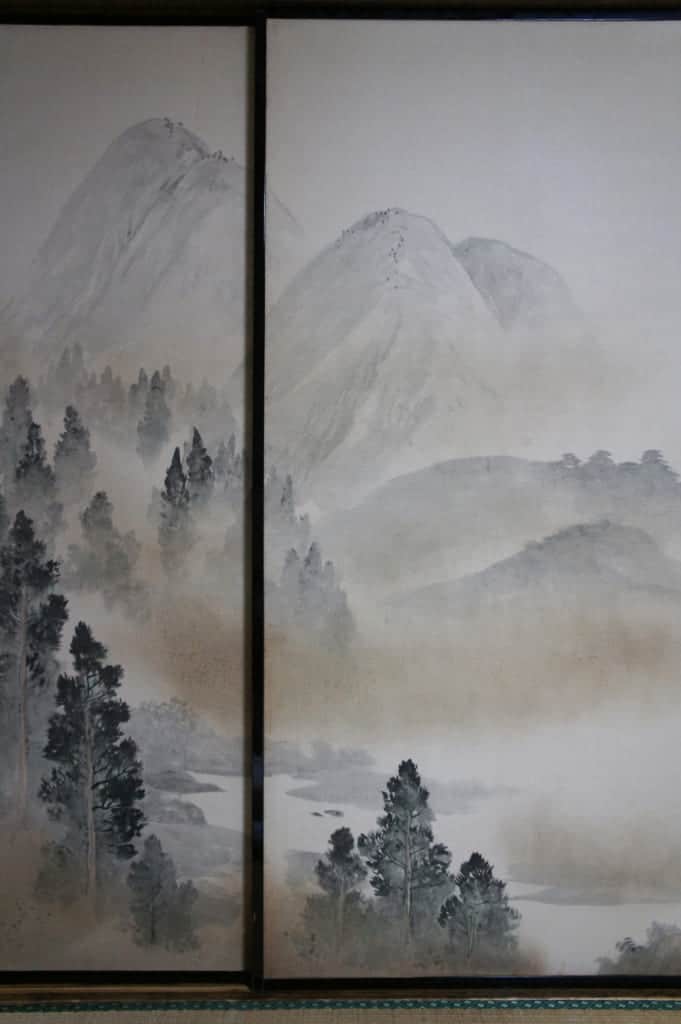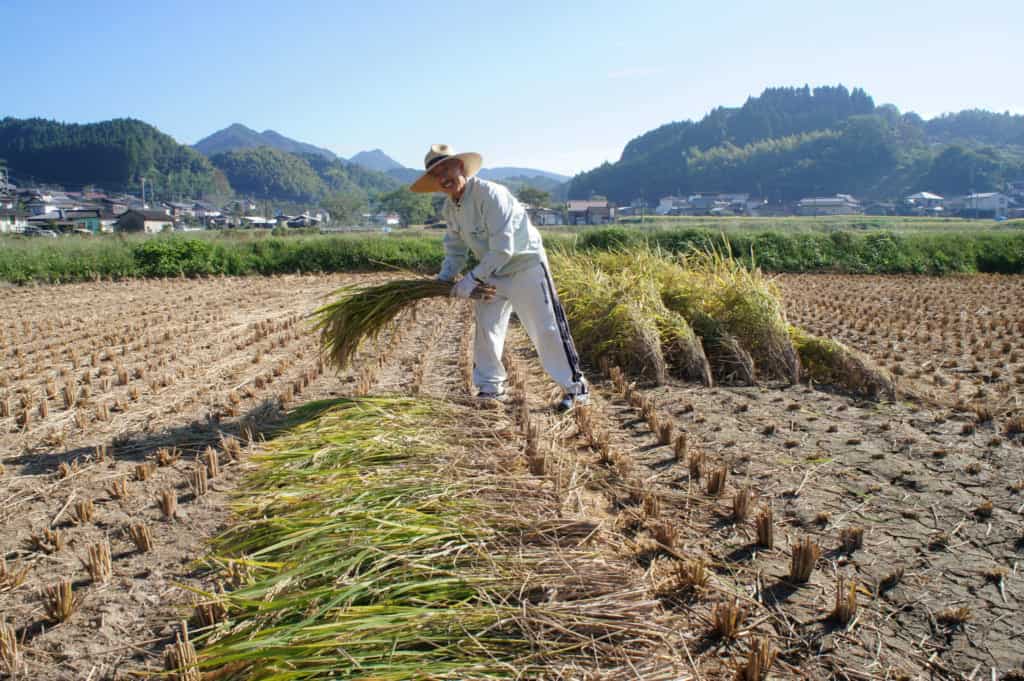sponsored by Northern Kumamoto Administrative Headquarters
When we travel, we often stay in hotels and hostels, but these styles of accommodations often feel isolated from local life and as though we are missing out on an authentic Japanese experience. These feelings can be more pronounced in Japan, a country where the line between public and private space is clearly defined. But there’s a way to experience everyday life with a Japanese family which provides travellers with an authentic experience that would certainly be one of the best memories of your travels. There’s even an expression for it in Japanese; minpaku means bedrooms in homes that families offer to visitors.
During my trip to northern Kumamoto, I had the opportunity to stay in Sozugawa, a minpaku run by the Yonemura family, one of 70 homes in the hamlet of Yukino in Kikuchi village.
A warm Welcome at a Traditional House in Kikuchi
When I first saw Tatsurou Yonemura, he was waiting for me in front of the station with a sign that read ‘Welcome to Yonemura family’. The sign was decorated in paper hearts and I knew straight away that my night with his family would be a memorable experience — something that was confirmed as soon as I arrived in his home.
In front of this old house, there was an array of potted plants, child-like painted images of crabs on the walls and a drawing depicting the smiling couple. When I stepped into the genkan (a small area inside the entrance of Japanese houses where you typically remove your shoes before entering), there was an impressive collection of owls and other small trinkets on display. I had arrived in a real family home, that’s for sure!
Mr. Yonemura’s wife, Keiko, gave me an equally warm welcome. She offered me some tea and sweets that she had prepared herself and played “Sakura” on the “taishogoto”, an instrument that I had never heard of, which she offered to teach me how to play.
I stayed in a tatami room, located in a part of the house that was a hundred years old, making it feel very traditional. It was filled with memories such as portraits of ancestors, family members and a range of trinkets and dolls which almost certainly belonged to my host’s 8 grandchildren.
I quickly felt at home and like a member of the family who had been invited to stay for the night rather than a paying customer. The difference was in the small details. The bedsheets had the scent of fresh linen and I realised that you didn’t get this smell in hotels. I slept really comfortably.
Exploring Kikuchi’s Local Cooking
Mrs. Yonemura invited me to join her in the kitchen so that she could share a local recipe with me for a dish called ohimesan. The name means ‘princess’ and I was very curious to know how it came to have this name. Were there little princesses in the miso soup?
Mrs Yonemura explained to me that it was actually a very nutritious dish invented after the war when there was a shortage of food. She explained that it contained sweet dough balls that were simply too pretty to eat (like a princess) which is how it got its peculiar nickname.
The recipe was simple. First, peel some sweet potatoes and then boil them before mashing them. Then add flour and mix to make balls of dough. The only thing left to do is cook them in the miso soup with the other ingredients!
Mr. Yonemura then took me to a neighboring inn (ryokan) where I could take a bath in their hot spring. I was able to lounge in a large rotemburo (outdoor bath) and appreciate the natural spring water, thick and hot, covering my body.
While I relaxed, Mrs. Yonemura was busy preparing a selection of dishes in the kitchen. The simple dishes were delicious and made from local ingredients; even the rice came from their own rice field. Everything, down to the miso paste was homemade. This type of meal, which reflected the generosity of my hosts and the love that they had for their land, was a real culinary feast. The meal was also an opportunity to get to know one another and our conversations continued well after we had finished our meal.
The next morning, I joined the Yonemura around the dining table once again for breakfast. Keiko’s generosity really knew no bounds as there was rice, miso soup, salad, tamagoyaki omelette, salmon, nashi (similar to a pear), other leftovers from the previous night as well as citrus fruits and some homemade sweets. There was certainly no chance of going hungry!
Early Morning Walk
To build up an appetite before breakfast, there’s nothing like an early morning walk. Mr. Yonemura took me around the surrounding area, enthusiastically sharing his knowledge of the region. Whether it was history, agriculture or hidden areas to explore, his passion for the area he called home was evident.
It was easy to understand why Mr. Yonemura loved Kikuchi so much. At 7 am, the golden rice fields, covered in a light morning fog and the calm light of the village, had a surreal beauty all of their own.
We crossed the rice field together and headed to the source of the Sozugawa river, a place that deserves the appreciation of residents like Mr. Yonemura. After all, the river allows people to grow such delicious rice in the first place and supplies the houses with excellent water. But it’s also the place where residents come with their children to play or catch crabs from the river bank.
I was touched to learn about the respect that local residents have for this water source. These days, we have a tendency to forget where clean water comes from and how precious it actually is. Life in rural areas such as this makes us think more about the simple things in life which are, nevertheless, essential.
We walked along a small path that led through the houses to Zenriyuji temple. Once there, I was invited into the main building which was rebuilt 8 years ago and still smelled of fresh wood. Mr. Yonemura explained how to worship at the temple and then invited me to ring the bell.
As if that was not enough, he went to the priest’s home and asked if I could visit the garden. It was a lovely Japanese-style garden that you wouldn’t expect to find in such a small temple.
Harvesting Rice
After breakfast, we made our way to the family’s own rice field. Mr. Yonemura had already harvested the rice from most of the field a few days earlier but he had kindly saved a small patch for me to do during my visit.
It was the first time that I had the opportunity to participate in the inekari (rice harvest) but Mr. Yonemura showed me how to do it, with the help of a small sickle. I was quite clumsy at first but I got quicker as I gradually got the hang of it. However, my hands could only grasp 3 bundles of the crops compared to the 4 that he could carry. Mr. Yonemura confided in me that some farmers had very large hands and could collect as many as 6 bundles at once!
But whatever the experience and size of a person’s limbs, harvesting by hand is long and tiring. Mr. Yonemura admitted that these days he uses a machine to harvest his rice as it can do in one hour what it takes a person two days to do by hand.
Unplanned Visit: Ryumon dam
If I had had a strict itinerary, my stay with the Yonemura family would have to come to an end, but I had a little bit of free time and they wanted to show me more of the area around their home. Therefore, we got in the car and drove towards Ryumon dam.
As we climbed the road, the view of Hanjaku Reservoir on one side and the valley on the other was so impressive. From this height, you realise that Kikuchi is situated in a vast, mountainous region where nature is so influential.
The reservoir is unusually long and allows residents to enjoy village life by holding boat racing competitions and doing activities such as kayaking.
Access and Practical Information
To find out more about homestays or farmstays in Kikuchi, check this page (available in English). It’s also possible to book your stay with the Yonemura family in Sozugawa on Airbnb.
They can provide accommodation for up to 5 people at once. If guests don’t speak English, the Yonemura family is used to hosting foreigners so communication will not be a problem. To ease communication, consider using a small automatic translator or a smartphone app. In any case, their generous hospitality will surpass any difficulties in communication.
Although the simplest way of getting around Northern Kumamoto is by car, it’s possible to get to Sozugawa on public transport. The Yonemura family can meet guests at Kikuchi plaza bus station, about 1 hour and 10 minutes by bus from Kumamoto.
You can also find information on the region on the Kikuchi River Basin – World Heritage website (available in English).
Access to Kikuchi From Other Areas
From Fukuoka Airport: about 1 hour and 25 minutes by car
From Oita Airport: about 2 hours and 15 minutes by car
From Kumamoto Airport: about 30 minutes by car
Translation by Mark Webster










































No Comments yet!